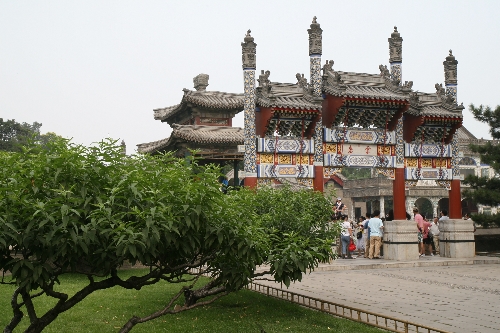

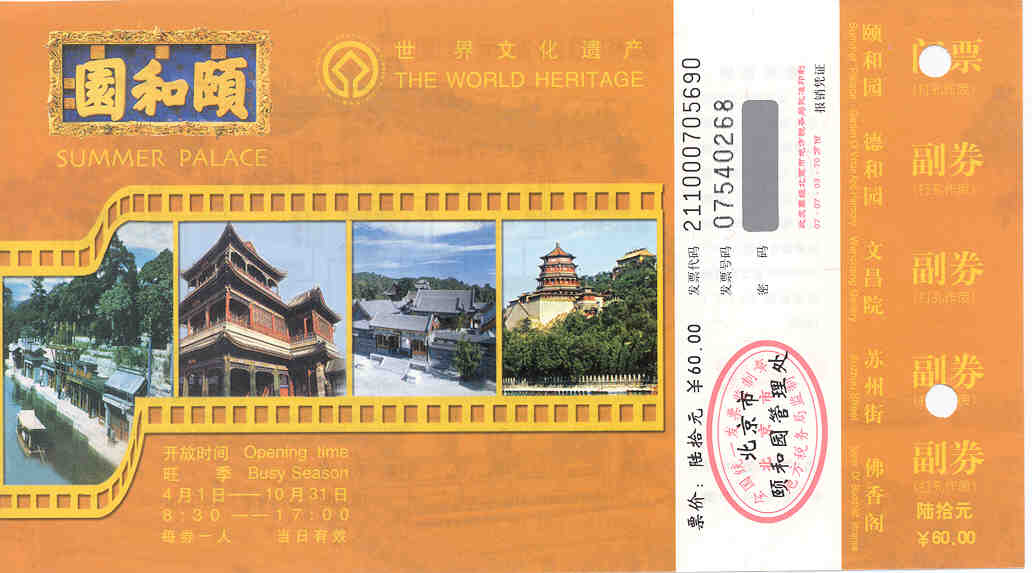
With an area of 290 hectares, Yiheyuan or the Summer Palace
was built in 1750 and served as an imperial garden - Qingyiyuan - Garden of
Clear Ripples in the Qing Dynasty. It was burnt down by the Anglo - French
Allied Forces in 1860, and was rebuilt in 1888 with Yiheyuan as its new name.
Empress Dowager Cixi and Emperor Guangxu lived and attended government affairs
here at the end of the 19th century and the beginning of the 20th century.
After
the founding of the People's Republic of China, the Summer. Palace is
classified as one of the first major national cultural relic units to be
protected. In 1980s the
Garden of Virtue and Harmony (Deheyuan), the Tower of the Fragrance of Buddha (
Foxiangge), Suzhou Street (Suzhou Jie) and other major scenic spots were opened
to the public after renovation. Successfully preserving the best in the
art of China's classical landscape gardening, the Summer Palace is called an
"earthly paradise".
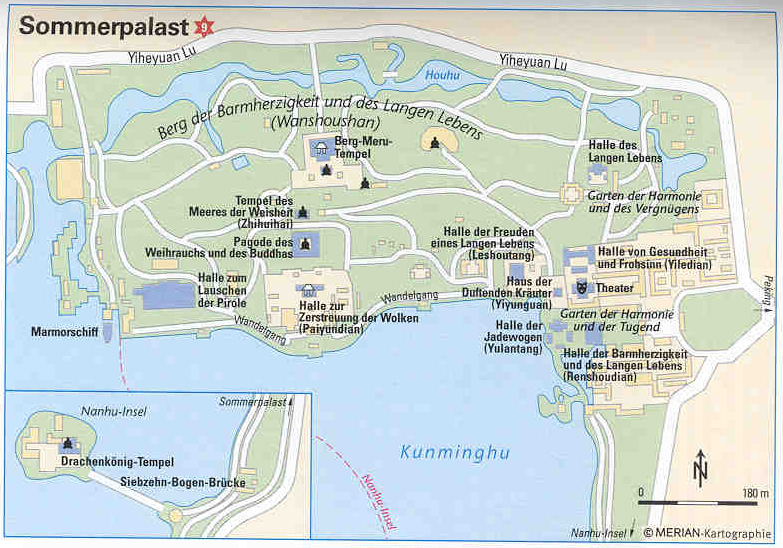
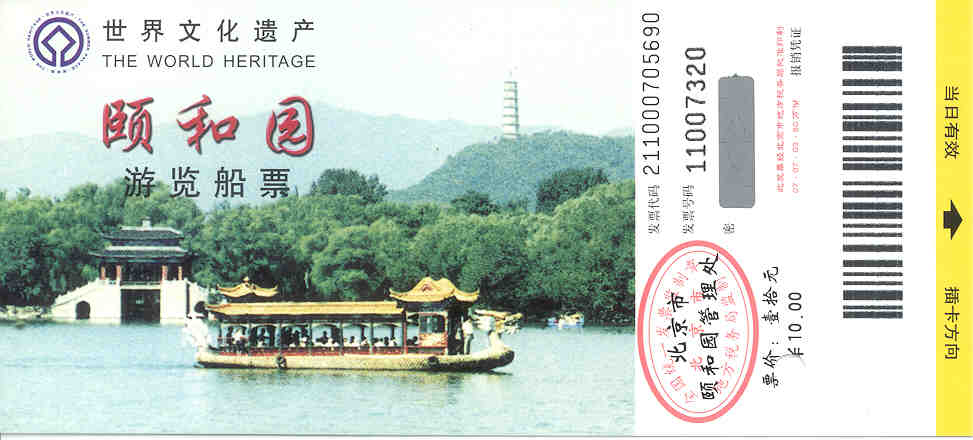
Suzhou Street
The street in the middle section of Back lake runs for over 300 metres. It has 64 shops, 14 gateways or archways and 8 small bridges. The shop assistants wearing clothes in the style of the Qing Dynasty warmly welcome customers from all over the world. The street really looks like a South China fair.
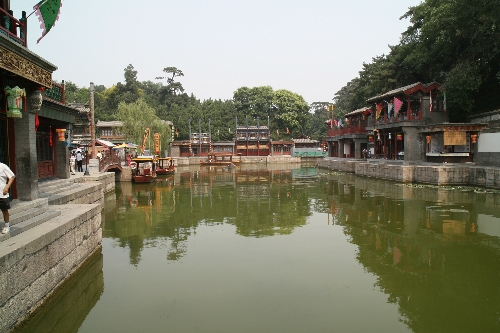 |
|
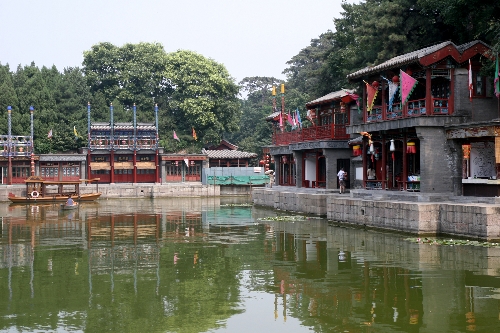 |
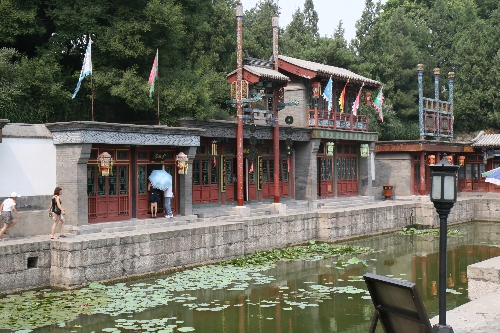 |
Four Great Regions
This is a massive complex of buildings forming a Tibetian-style temple. It was built in the Qianlong period, but was devastated in the war in 1860. Renovation of these buildings was done not long ago.
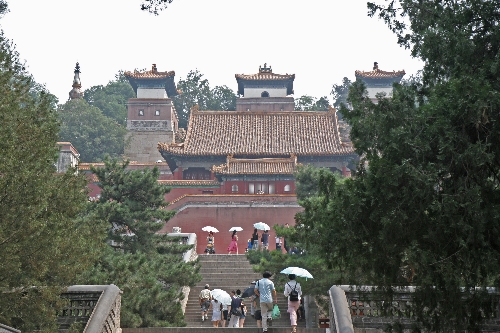 |
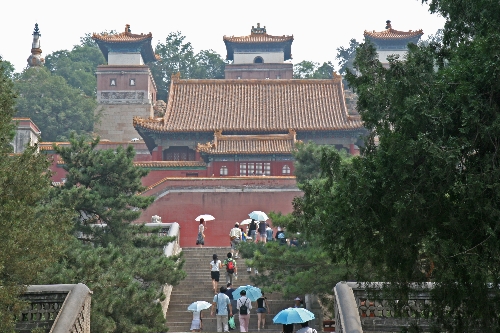 |
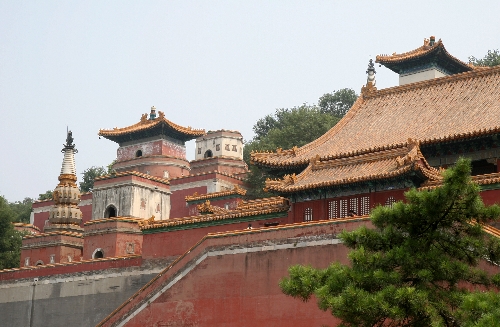 |
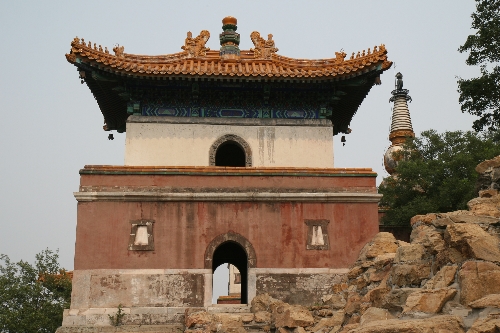 |
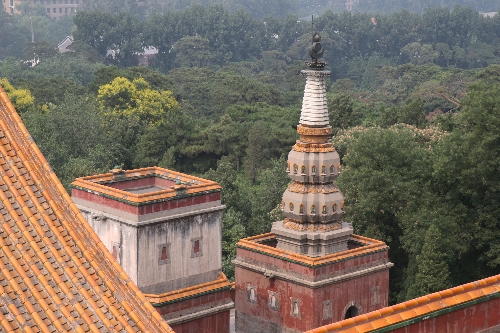 |
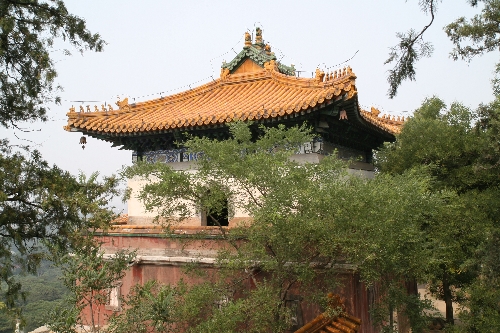 |
Realm of Multitudinous Fragrance
This arch of five coloured glaze with three doorways is a structure of bricls and stones. On the front and back sides of this arch and on that of the Sea of Wisdom Temple are carved words: "The realm of multitudinous fragrance, the forests of god; the seas of wisdom and the auspicious clouds."
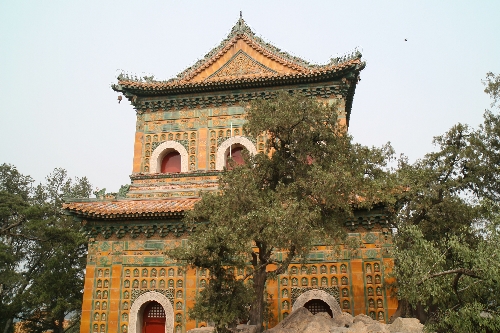 |
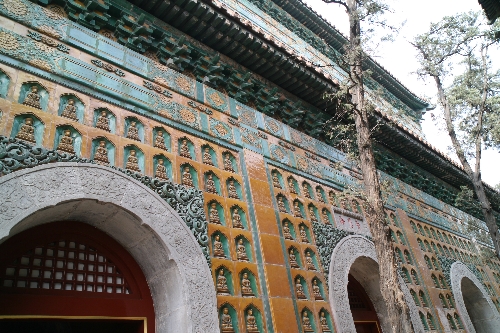 |
Tower of the Fragrance of the Buddha (Holzpagode des Weihrauchs und des Buddhas)
The tower, 41 metres high, is a three-storeyed octagonal structure with four tiers of eaves. Architecturally, it is a major building.
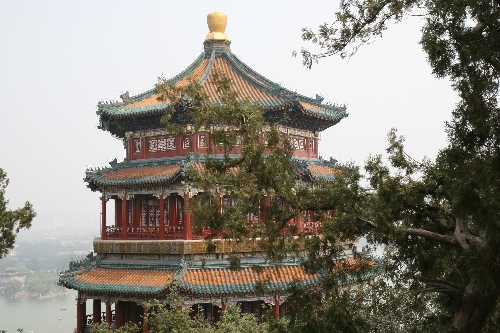
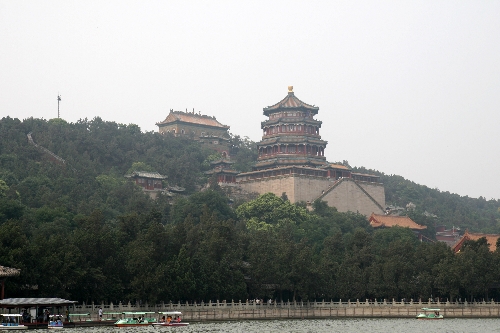 |
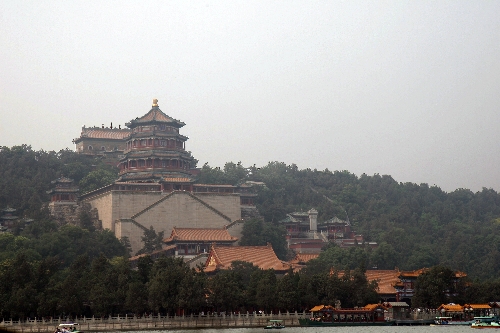 |
Halle der Zerstreuung der Wolken (Hall of Dispelling Clouds)
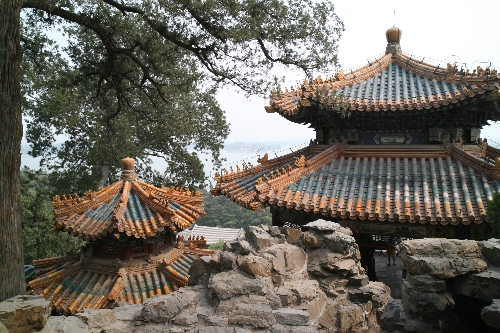 |
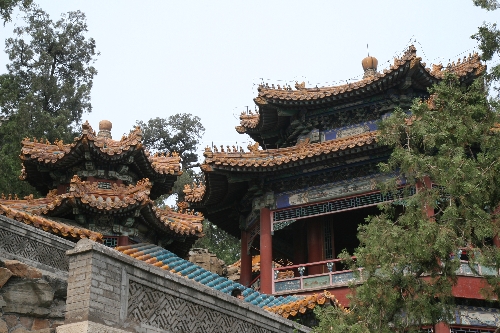 |
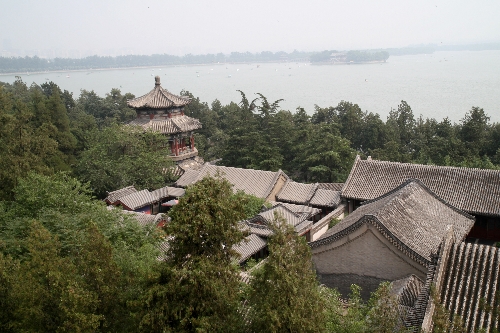 |
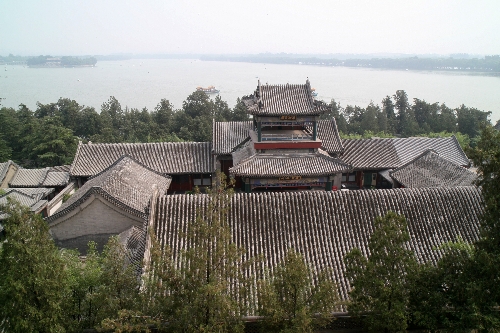 |
Long Corridor
The Long Corridor runs along the lake at the foot of the hills. It is 728 metres long, with 14000 pictures painted on its ceiling. It is known as the longest painted gallery in the world.
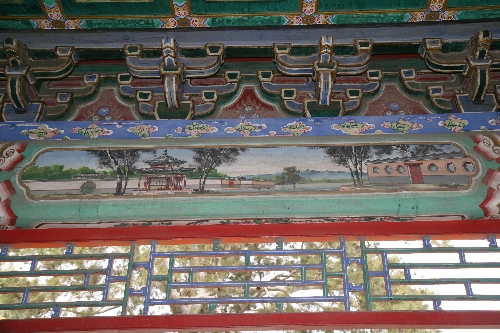 |
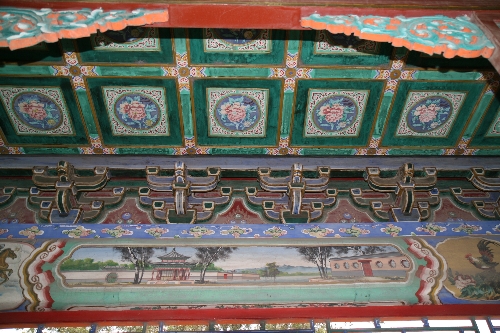 |
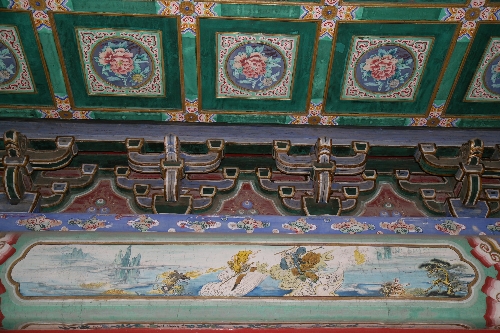 |
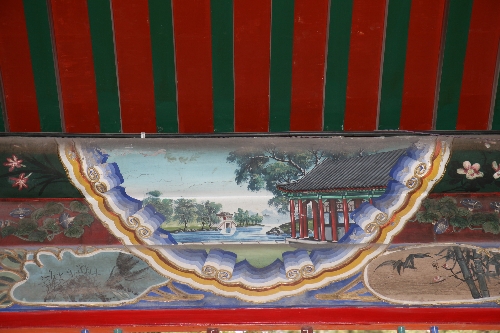 |
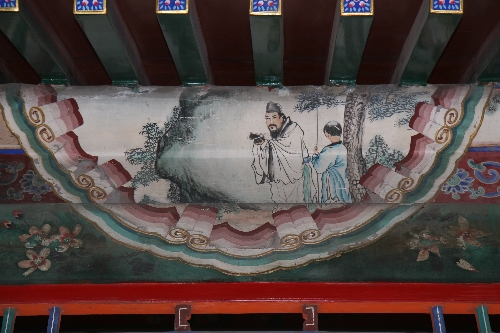 |
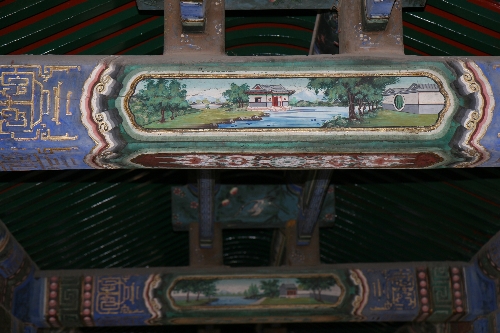 |
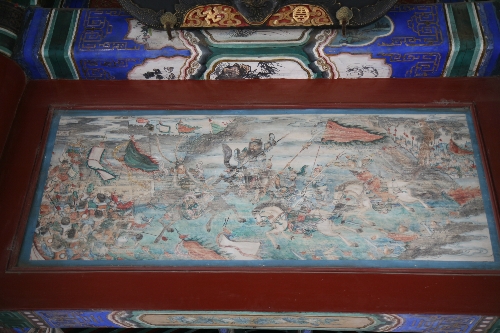 |
|
Hall for Listening to Orioles (Tingli Guan)
Initially
built by Emperor Qianlong (1736-1795) for his mother to watch operas, this
theater with its two-storey stage was named the "Hall for Listening to
Orioles" because in old times, people often compared beautiful voices to
the singing of orioles. It was burned down by the Anglo-French Allied Forces in
1860 and rebuilt during the reign of Emperor Guangxu (1875-1908). Before the
completion of the Great Stage in the Garden of Virtue and Harmony, the Empress
Dowager Cixi often watched operas and held banquets here. Now, the hall
serves as a restaurant specializing in imperial court cuisine and is famous for
having received over a hundred foreign leaders.
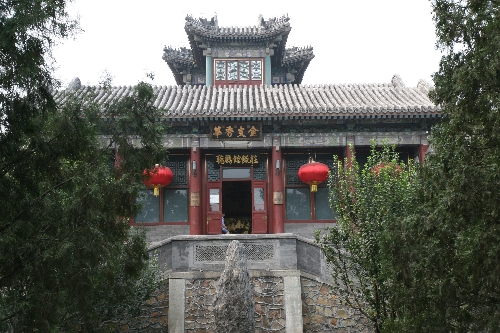
Marmorschiff - Clear and Peaceful Boat
Popularly known as the Marble Boat, the bot was built in 1755. It is 36 metres long, with a hull made of massive stone slabs. The saying goes: "Water can carry a boat, and it can also capsize a boat." By following the allusion, the Marble Boat was built to mean that the Qing Dynasty would be as solid as rock and never fall.
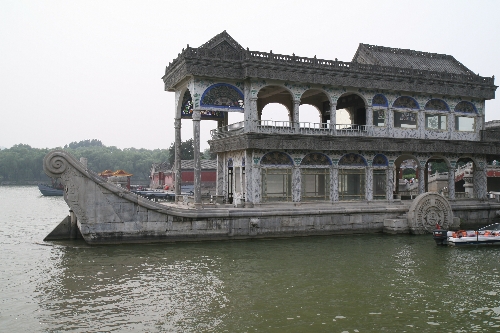 |
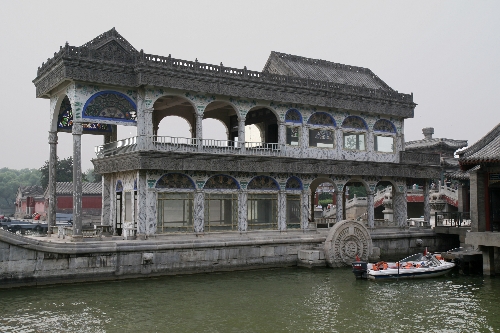 |
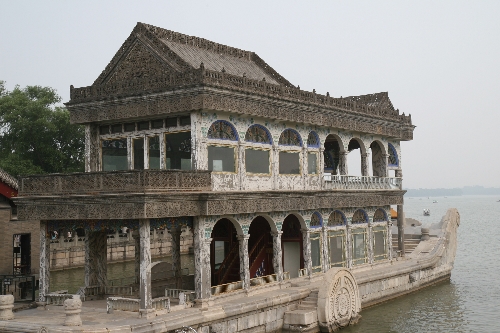 |
|
